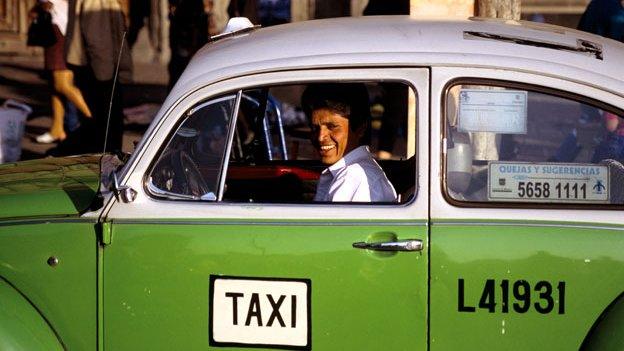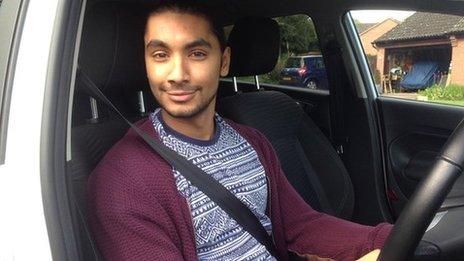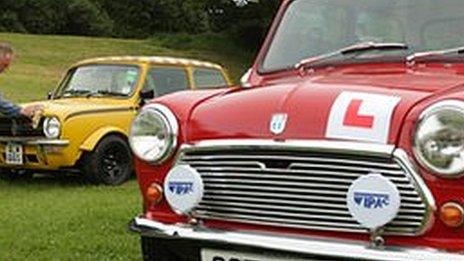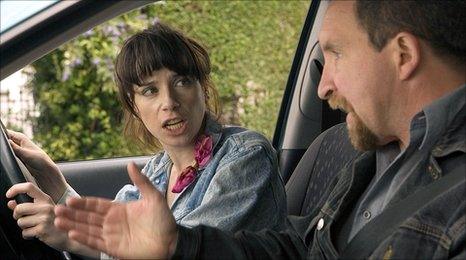Three-point turn may be dropped from UK driving test
- Published
.jpg)
The three-point turn could be dropped from the UK driving test as part of biggest update to the exam in 20 years.
Under a revised practical exam, learners may also be asked to use a satellite navigation system instead of following road signs.
About 1,000 learners will take part in a trial of a new practical exam.
The Driver and Vehicle Standards Agency said any eventual changes would be subject to full public consultation.
"We are carrying out initial research to explore how the driving test could better reflect real-life driving," said a DVSA spokesman.
The DVSA is an agency of the Department for Transport and sets the standards for driving and motorcycling in the UK.
The theory test was introduced in 1996 and a section where motorists are asked to find their own way to a destination - aimed at assessing "independent driving", external - in 2010.
Under the other changes being considered, drivers may no longer need to reverse around a corner.
The DVSA said drivers may instead be asked to focus on more realistic everyday manoeuvres, such as reversing out of a parking bay, or re-joining the flow of traffic from the side of a road.
But reverse parking - either into a parking bay or parallel parking - would remain as one of the manoeuvres candidates could be asked to perform, a spokesman said.
The two vehicle-safety questions are currently asked at the start of the test. In future, one these may be asked while the candidate is driving. The DVSA said a candidate, for example, may be asked to show how they would operate the rear heated screen while driving.

The driving test
First introduced in 1935
Test suspended during World War Two and the Suez crisis in 1956
Hand signals dropped in 1975 and theory test introduced in 1996
Practical test made up of eyesight check; vehicle safety questions; general driving ability; reversing vehicle safely, independent driving
Pass rate in 1935 was 63% compared with 46% in 2009
More than 46 million tests taken since 1946

The Driving Instructors Association welcomed the plans.
Its chief executive Carly Brookfield said: "DIA has been heavily involved in the scoping of this project and is enthusiastic about the opportunity it presents to evolve the L-test to a level where it more realistically assesses a candidate's ability to competently and safely manage road based risk and driving in real life, on real roads."
RAC Foundation director Professor Stephen Glaister said: "We all rely on our sat navs but they are not infallible and it is when they have led us down a dead end that we need to know how to do a three-point turn.
"It's fine to add some aspects to the test but we should be cautious about removing the basics."
- Published21 September 2014

- Published21 May 2014

- Published17 July 2013

- Published4 October 2010

- Published4 October 2010